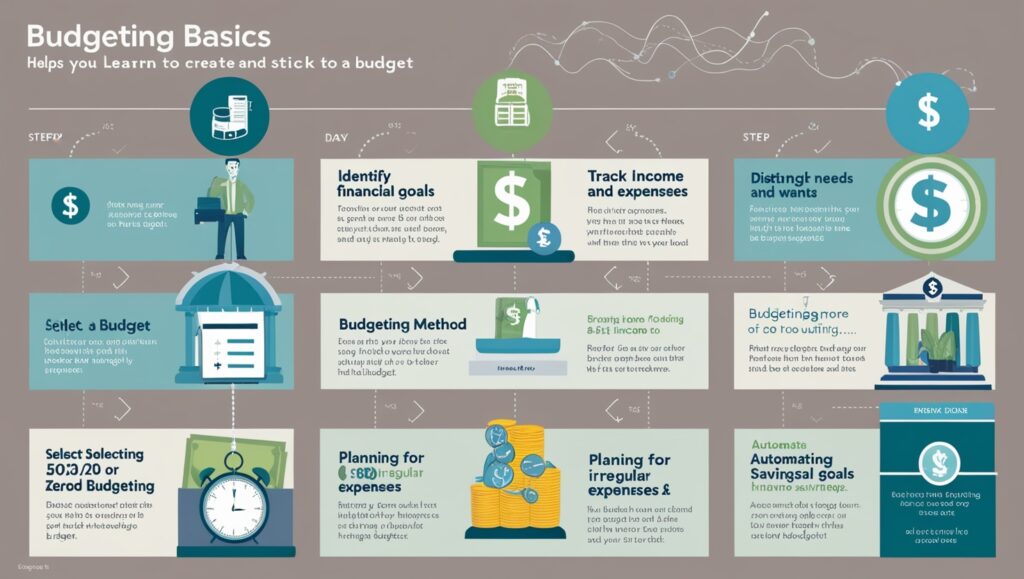Create a Budget You Can Stick To
Create a Budget You Can Stick To Women is one of the most effective ways to take control of your finances, but sticking to it can be challenging. The key to success is building a budget that aligns with your financial goals and is easy to maintain. In this blog, we’ll guide you through the steps to create a realistic and flexible budget that works for your lifestyle.
1. Understand Your Financial Goals
Before diving into the numbers, it’s important to know why you’re budgeting. Do you want to save for a vacation, pay off debt, or build an emergency fund? Clearly defined goals will motivate you to stay on track and give you something to work towards. Make sure your goals are specific, measurable, and realistic.
Pro Tip: Break large financial goals into smaller, manageable milestones to avoid feeling overwhelmed.
2. Track Your Income and Expenses
To create an effective budget, you first need to know where your money is coming from and where it’s going. Start by tracking your income (salary, side jobs, investments, etc.) and listing all your monthly expenses. Separate your expenses into categories such as housing, groceries, utilities, entertainment, and transportation.
Pro Tip: Use budgeting apps or spreadsheets to easily track your income and expenses in real-time.
3. Differentiate Between Needs and Wants
One of the most important steps in budgeting is to distinguish between essential expenses (needs) and non-essential expenses (wants). Housing, food, and utilities are needs, while dining out, streaming services, and new clothes are wants. Identifying these categories will help you prioritize spending and cut back on areas that aren’t necessary.
Pro Tip: Be honest with yourself when determining what counts as a “need” versus a “want.
4. Choose a Budgeting Method
Zero-Based Budgeting: Ensure every dollar of your income is assigned a purpose, with your total income minus expenses equaling zero.
Envelope System: Physically or digitally assign cash for specific spending categories and stop spending when the cash runs out.
Pro Tip: Experiment with different methods to see which one works best for you.
5. Plan for Irregular Expenses
It’s easy to overlook irregular expenses like car repairs, medical bills, or annual subscriptions. Plan for these by setting aside a portion of your income each month into an emergency or sinking fund. This will help you avoid financial stress when unexpected costs arise.
Pro Tip: Review your expenses over the past year to identify any irregular costs and plan for them accordingly
6. Make Adjustments Where Necessary
After reviewing your budget, you might notice areas where you can make adjustments. Maybe you’re spending more than you thought on takeout or entertainment. Look for areas to cut back without completely eliminating things that bring you joy. Budgeting isn’t about deprivation; it’s about finding balance.
Pro Tip: Start by making small cuts, such as reducing takeout or canceling unused subscriptions, and gradually adjust as needed
7. Automate Savings and Bill Payments
One of the easiest ways to stick to your budget is to automate your savings and bill payments. Set up automatic transfers to your savings account each payday, and schedule automatic payments for fixed bills. This ensures that you meet your savings goals and avoid late fees.
Pro Tip: Automating your finances takes the guesswork out of budgeting and makes it easier to stay on track.
8. Regularly Review and Adjust Your Budget
Your budget should be flexible and adaptable to changes in your financial situation. Review your budget monthly to see if it’s working for you. Are you consistently overspending in certain categories? Is there room to save more? Adjust your budget as your income, expenses, or financial goals change.
Pro Tip: Life changes like a new job, relocation, or family additions can affect your budget, so stay proactive in making adjustments..
Final Thoughts
Creating a budget you can stick to isn’t about perfection—it’s about creating a realistic plan that aligns with your lifestyle and financial goals. By tracking your income, managing expenses, and regularly reviewing your progress, you’ll develop the discipline and flexibility needed to maintain financial stability. Start today and enjoy the peace of mind that comes with having a budget that works for you!

